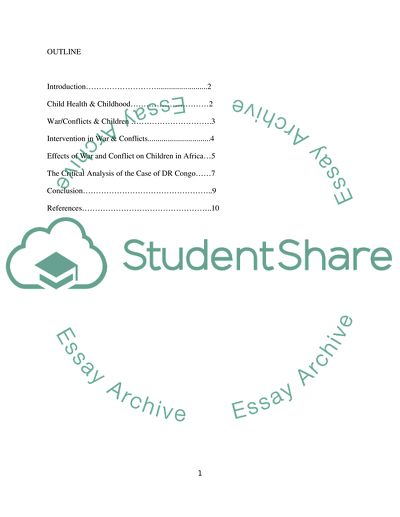Cite this document
(“War and Conflicts in Africa and Its Effects on Childhood and Health Term Paper”, n.d.)
War and Conflicts in Africa and Its Effects on Childhood and Health Term Paper. Retrieved from https://studentshare.org/social-science/1751492-essay-title-intervention-in-the-third-world-by-minoritydevelopednorthern-hemisphere-countries-is-influenced-by-political-economic-and-environmental-phenomena-and-has-not-always-been-beneficial-to-the-health-of-children-with-reference-to-one-ty
War and Conflicts in Africa and Its Effects on Childhood and Health Term Paper. Retrieved from https://studentshare.org/social-science/1751492-essay-title-intervention-in-the-third-world-by-minoritydevelopednorthern-hemisphere-countries-is-influenced-by-political-economic-and-environmental-phenomena-and-has-not-always-been-beneficial-to-the-health-of-children-with-reference-to-one-ty
(War and Conflicts in Africa and Its Effects on Childhood and Health Term Paper)
War and Conflicts in Africa and Its Effects on Childhood and Health Term Paper. https://studentshare.org/social-science/1751492-essay-title-intervention-in-the-third-world-by-minoritydevelopednorthern-hemisphere-countries-is-influenced-by-political-economic-and-environmental-phenomena-and-has-not-always-been-beneficial-to-the-health-of-children-with-reference-to-one-ty.
War and Conflicts in Africa and Its Effects on Childhood and Health Term Paper. https://studentshare.org/social-science/1751492-essay-title-intervention-in-the-third-world-by-minoritydevelopednorthern-hemisphere-countries-is-influenced-by-political-economic-and-environmental-phenomena-and-has-not-always-been-beneficial-to-the-health-of-children-with-reference-to-one-ty.
“War and Conflicts in Africa and Its Effects on Childhood and Health Term Paper”, n.d. https://studentshare.org/social-science/1751492-essay-title-intervention-in-the-third-world-by-minoritydevelopednorthern-hemisphere-countries-is-influenced-by-political-economic-and-environmental-phenomena-and-has-not-always-been-beneficial-to-the-health-of-children-with-reference-to-one-ty.


